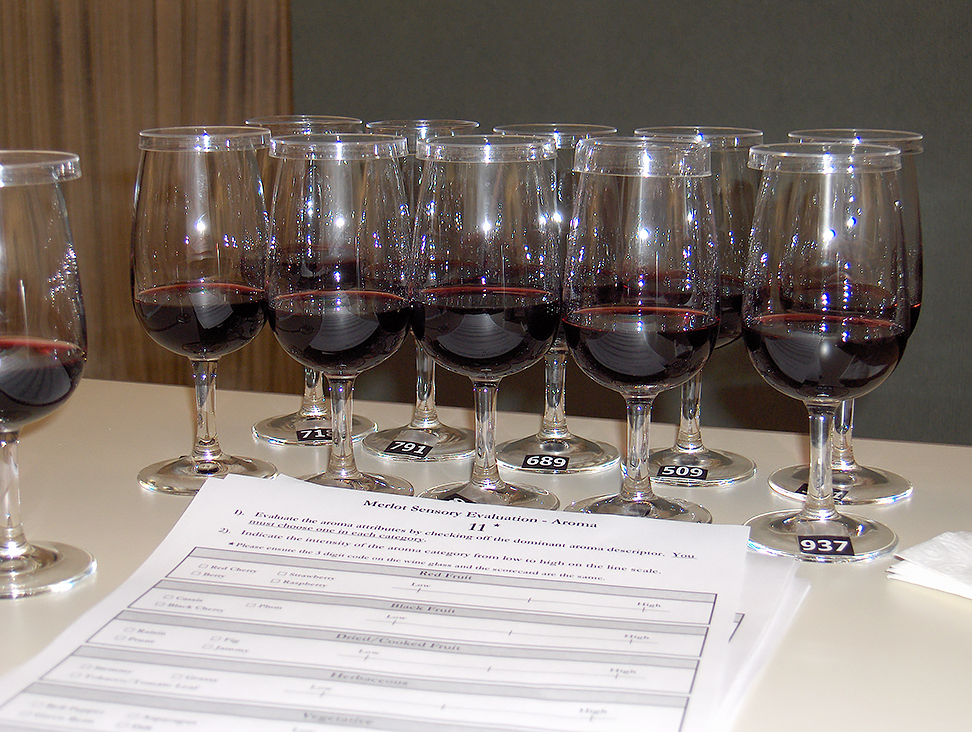Using words to describe wine is fraught with peril and leaves wine writers exposed to ridicule. Adapting a line from Martin Mull: writing about wine is like dancing about architecture. And we do it anyway.
Many terms about wine tastes and smells are easy to understand, delicious to imagine.
Cherry, strawberry, raspberry, blueberry, plum, peach, pear, apricot, cranberry, lemon, lime, blackberry, watermelon. We know those tastes and more from fruit we eat, and we can perceive them in the wine we drink.
Then, there are problematic descriptors. Minerals: like sucking on a rock. Who does that? Leather: do winemakers drop cowhides into their fermentation tanks? Green bell pepper: wait, I thought wine was made from grapes. What are those wine snobs talking about? Are they just making stuff up to appear superior to those of us who just want to sip something to complement a meal, maybe get a little buzz, maybe titillate the libido of a hot date? We visit wines terms in the next six columns.

Let’s start with the easy flavor and aroma notes related to fruits. Grapes are fruits and share the same complex chemistry with fellow fruits. During grape fermentation chemical compounds—esters—are created that are identical or nearly identical to those found in other fruits. When a wine is said to have cherry flavor or aroma, it is just as valid to say that cherry juice has a wine flavor or aroma.
Secondary flavors spring from the winemaking process. Oak barrels impart notes from the wood. American oak tends to evoke vanilla and coconut notes, French oak hazelnut and smokiness. All oak can bring oak spice, clove, toast, chocolate depending on how the barrel is made. Oak aging, which allows a slow intake of oxygen, makes wine smoother and less astringent while it adds its flavor and aroma notes.
Tertiary flavors develop with aging, in barrel, in stainless steel, in concrete eggs, and in the bottle. Those flavors and aromas include earth, coffee, and leather. In all these cases, the flavors and aromas are caused by the same—or nearly identical—chemical compounds found in the descriptors. As with fruit descriptors, it is just as valid to say this wine has aroma notes of leather as it is to say leather has aroma notes of a wine. The molecules presenting the sensation are the same or almost the same.
We will plunge into weird wine terms the next two weeks.
Last round: Why did the cowboy get a wiener dog? Because he wanted to get a long little doggie. Wine time.

